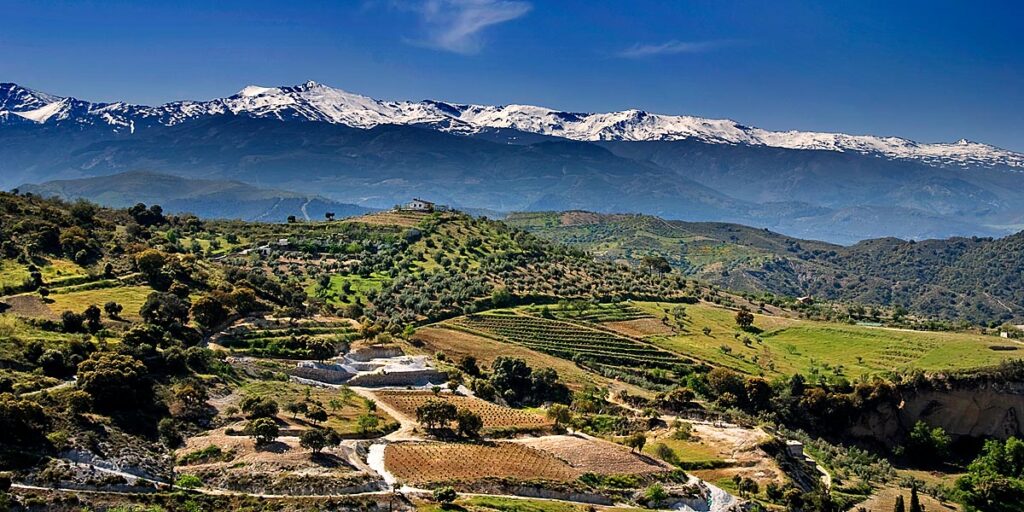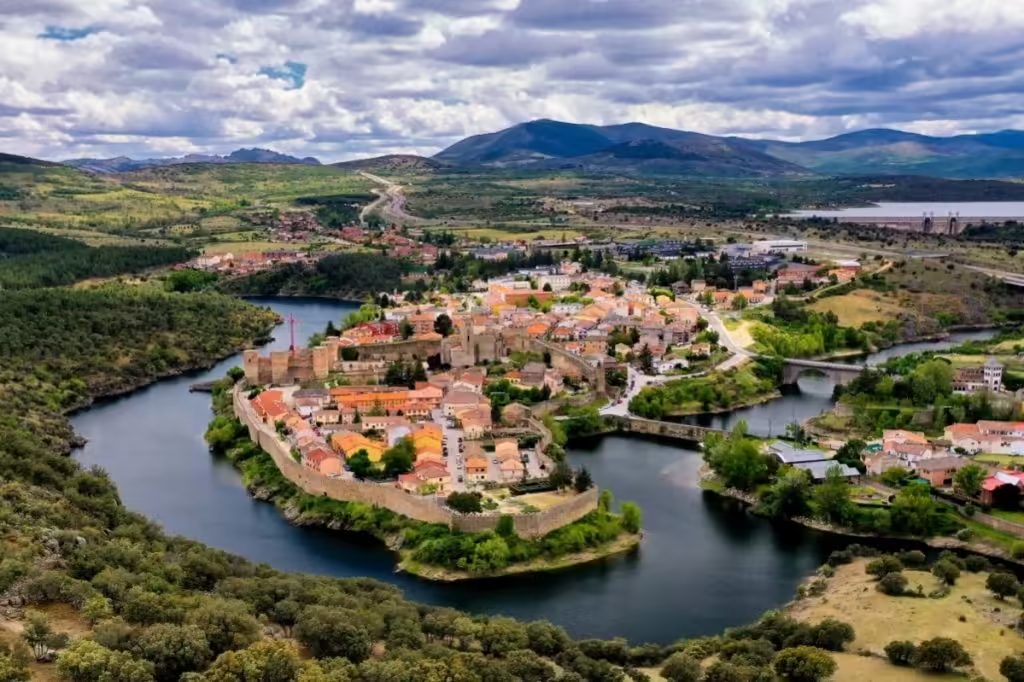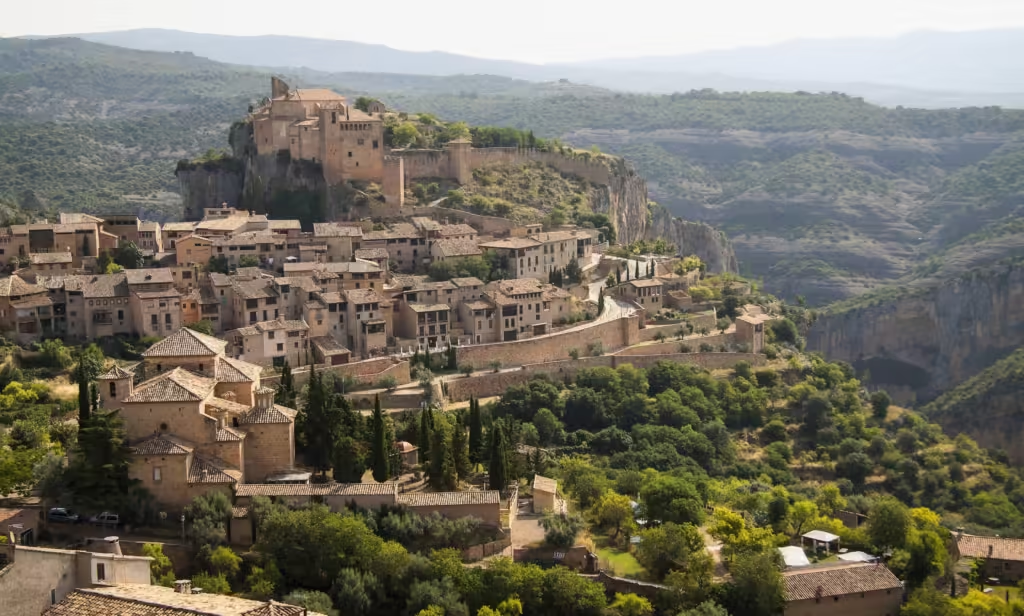Sierra Nevada National Park is a breathtaking destination in southern Spain. Located primarily in the provinces of Granada and Almería, it offers striking peaks, diverse wildlife, and unforgettable cultural experiences. This mountainous jewel was declared a UNESCO Biosphere Reserve in 1986, and it was officially designated as a national park in 1999. Adventurers, nature lovers, and culture enthusiasts all flock here to explore its many wonders. In this comprehensive guide, we will delve into every corner of Sierra Nevada National Park. We will examine its unique geography, flora, and fauna, as well as provide practical travel tips for your next unforgettable visit.

Introduction and Significance of Sierra Nevada National Park
Sierra Nevada National Park is the highest mountain range in continental Spain. It is home to Mulhacén, which stands at an impressive 3,479 meters. This monumental peak is the tallest in mainland Spain and draws avid hikers from around the globe. The park spans approximately 85,883 hectares, providing countless opportunities for exploration and discovery.
The combination of rugged terrain and unique geological formations makes Sierra Nevada National Park an essential destination. It is known for its stark contrasts. Snow-capped peaks tower above the subtropical coastline of the Costa Tropical, which lies only about 100 kilometers away. This drastic change in altitude creates a variety of microclimates. Many visitors come to witness this diverse landscape and to enjoy an array of outdoor activities.
Geography and Climate Analysis
The park’s landscape is shaped by steep valleys, dramatic ravines, and high summits. Melting snow provides water to several rivers, such as the Genil and Guadalfeo. This abundant water supply forms lush mountain meadows, waterfalls, and alpine lakes.
Short, mild summers and chilly winters dominate the climate in Sierra Nevada National Park. At higher altitudes, temperatures can remain below freezing for much of the winter, causing significant snowfall. During the summer, hikers can enjoy cooler temperatures in the highlands compared to the hotter plains below. Spring and autumn are often considered the best times to visit due to moderate temperatures and fewer crowds.
Rich Biodiversity and Unique Wildlife
Sierra Nevada National Park boasts incredible biodiversity. Visitors are often surprised by the park’s ability to support many rare plants and animals across different altitudinal zones.
Rare and Endemic Flora
One of the park’s most impressive features is its variety of plant species. Over 2,100 vascular plant species live here, and more than 80 of these are endemic. They thrive in the park’s high-altitude environment thanks to the region’s diverse microclimates.
Sierra Nevada Violet (Viola crassiuscula): This lovely flower is frequently spotted on rocky slopes.
Starry Saxifrage (Saxifraga stellaris): Found near waterfalls, its bright white petals form a star shape.
Endemic Species: Many plants exist only in Sierra Nevada, making their protection a top priority for conservationists.
Fauna Highlights
Several iconic animals reside in the park’s different habitats. Birdwatchers can spot the Golden Eagle or Bearded Vulture soaring over cliffs. You may also witness the Iberian Ibex climbing steep slopes with ease.
Iberian Ibex: This wild goat, with curved horns, is often found grazing in higher elevations.
Wild Boar: Common in the wooded lower areas, they feed on acorns and other forest floor delicacies.
Foxes and Wildcats: Though more elusive, they roam the park in search of prey and shelter.
Outdoor Adventures in Sierra Nevada National Park
Sierra Nevada National Park offers a multitude of outdoor activities. From hiking to skiing, there is something for every type of traveler.
Hiking Trails and Trekking Opportunities
Hikers can select from easy strolls to challenging multi-day treks. Well-marked trails traverse through picturesque valleys, pass by clear mountain streams, and ascend to dramatic peaks.
Mulhacén Summit Hike: A favorite among experienced hikers, this route leads you to mainland Spain’s highest peak. Clear skies offer panoramic views of the surrounding mountains, and on exceptionally clear days, you may see the African coast.
Poqueira Gorge Trek: Winding through traditional white-washed villages, such as Capileira and Pampaneira, this route provides a blend of cultural immersion and scenic vistas.
Vereda de la Estrella: This moderate trail follows a historic route used by miners. It crosses forests, streams, and includes glimpses of glacial cirques and towering peaks.
Skiing and Snowboarding
When winter arrives, Sierra Nevada transforms into a snowy playground. The Sierra Nevada Ski Resort, located near the city of Granada, is one of Europe’s southernmost ski stations. It caters to beginners, intermediate skiers, and advanced thrill-seekers alike.
Ski Slopes: The resort has over 100 kilometers of marked slopes. These range from green runs for novices to black runs for expert skiers.
Snow Activities: Off-slope adventures include snowshoeing, cross-country skiing, and snow parks for freestyle enthusiasts.
Rock Climbing and Mountain Biking
Craggy cliffs and winding trails attract adventurers who crave excitement. Local outfitters provide guided rock climbing excursions for novices and seasoned climbers. Mountain bikers also love the park’s challenging singletrack routes. Downhill segments, combined with scenic fire roads, create thrilling rides that take you across varied terrain.
Best Time to Visit for the Ultimate Experience
Sierra Nevada National Park offers year-round possibilities, but timing your trip can enhance your stay.
Spring (March to May): Snow begins to melt, revealing bright wildflowers across the meadows. Hiking trails become accessible, and temperatures are mild.
Summer (June to August): Warm days and cooler nights make high-altitude adventures pleasant. Popular routes are busier, and accommodation may fill up fast.
Autumn (September to November): The foliage changes color, creating a vibrant display. Weather is still favorable, and crowds are fewer.
Winter (December to February): Skiing takes center stage. Upper trails may be snow-covered, limiting some hiking options, but winter sports enthusiasts thrive.
Getting There and Accommodation Options
Granada is the primary gateway to Sierra Nevada National Park. The city’s airport (Federico García Lorca Granada-Jaén Airport) hosts flights from several Spanish cities. International travelers can fly into Málaga–Costa del Sol Airport, then take a bus or rental car for the 90-minute drive to Granada.
Public transportation links Granada to towns at the foot of the mountains, including Capileira, Bubión, and Monachil. From these villages, you can join guided tours or begin your hiking adventures.
Accommodations range from charming rural inns to mountain refuges and four-star hotels. Many villages in the Alpujarras region offer quaint bed and breakfasts or guesthouses. The Sierra Nevada Ski Resort area features hotels and apartments for skiers, with easy slope access during winter.
Must-See Local Attractions Beyond the Park
The Historic City of Granada
Granada is famous for its Islamic heritage, exemplified by the Alhambra. This medieval fortress and palace complex boasts splendid Moorish architecture. The Generalife gardens feature manicured courtyards, fountains, and breathtaking views. Granada’s old town also offers lively tapas bars, flamenco shows, and vibrant cultural events.
The Enchanting Alpujarras
South of the high peaks lies the Alpujarras region. It consists of white-washed villages perched on steep hillsides. Centuries-old Berber architecture, narrow cobbled streets, and terraced farmland create a magical atmosphere. Towns like Pampaneira, Capileira, and Trevélez are popular stops. Many travelers sample local delicacies like jamón serrano (cured ham) and fresh goat cheese.
Practical Tips for an Unforgettable Experience
Pack Appropriately: High-altitude weather can change rapidly. Bring layers, waterproof gear, sunscreen, and a hat.
Stay Hydrated: Dry mountain air can dehydrate you quickly. Always carry enough water.
Get Proper Footwear: Trails vary in difficulty, so wear sturdy hiking boots or shoes with good grip.
Check Weather Reports: In winter, certain roads and trails may close. Monitor conditions online or inquire locally.
Respect the Environment: Sierra Nevada National Park is a protected area. Stay on marked paths and adhere to guidelines to preserve its delicate ecosystem.
Frequently Asked Questions
1. Is Sierra Nevada National Park open year-round?
Yes. The park itself is open throughout the year. However, certain facilities or trails may close in winter due to heavy snowfall. Check local authorities or park information centers to confirm current conditions.
2. Do I need a permit to hike in the park?
Most trails do not require permits. However, certain sensitive areas, especially those involving special conservation zones, may have restrictions. Always consult the official park website or a visitor center for the latest guidelines.
3. What is the highest peak I can climb?
Mulhacén is the highest peak in continental Spain at 3,479 meters. Experienced hikers typically reach the summit between late spring and early autumn, when the paths are clear of deep snow.
4. Are there entrance fees?
No. Sierra Nevada National Park does not charge an entrance fee. Some activities, like guided tours or visits to specific landmarks, may have costs.
5. Can beginners ski in Sierra Nevada?
Absolutely. The Sierra Nevada Ski Resort caters to all skill levels. Several ski schools offer group lessons and private instruction to ensure a safe, enjoyable experience for novices.
6. Are guided tours available?
Yes. Many local companies offer guided excursions for hiking, climbing, and wildlife observation. Guided tours provide valuable insights into local culture and natural history.
Conclusion: Plan Your Sierra Nevada Adventure Today
Sierra Nevada National Park is more than just a high-altitude landscape. It is a tapestry of rare flora, majestic wildlife, and fascinating cultural heritage. Adventurers can climb lofty summits or slide down pristine slopes in the winter. Meanwhile, travelers seeking a slower pace can immerse themselves in the small villages of the Alpujarras.
Whether you are an experienced trekker, a curious naturalist, or a cultural explorer, Sierra Nevada National Park has a special charm. Plan your visit around the season that best suits your interests, and take advantage of the many trails, scenic viewpoints, and local communities. Prepare properly, stay informed about conditions, and respect the park’s conservation efforts.
A trip to Sierra Nevada National Park offers a distinctive look at Spain’s natural and cultural treasures. The combination of dramatic mountain scenery and traditional Andalusian life will leave you in awe. Make your travel plans now and discover why so many fall in love with this spectacular region. Safe travels and enjoy the journey!

